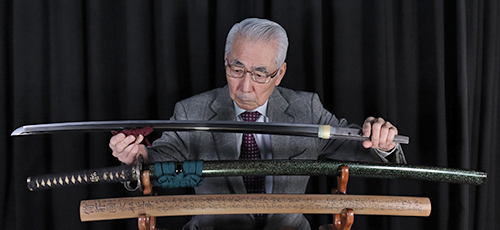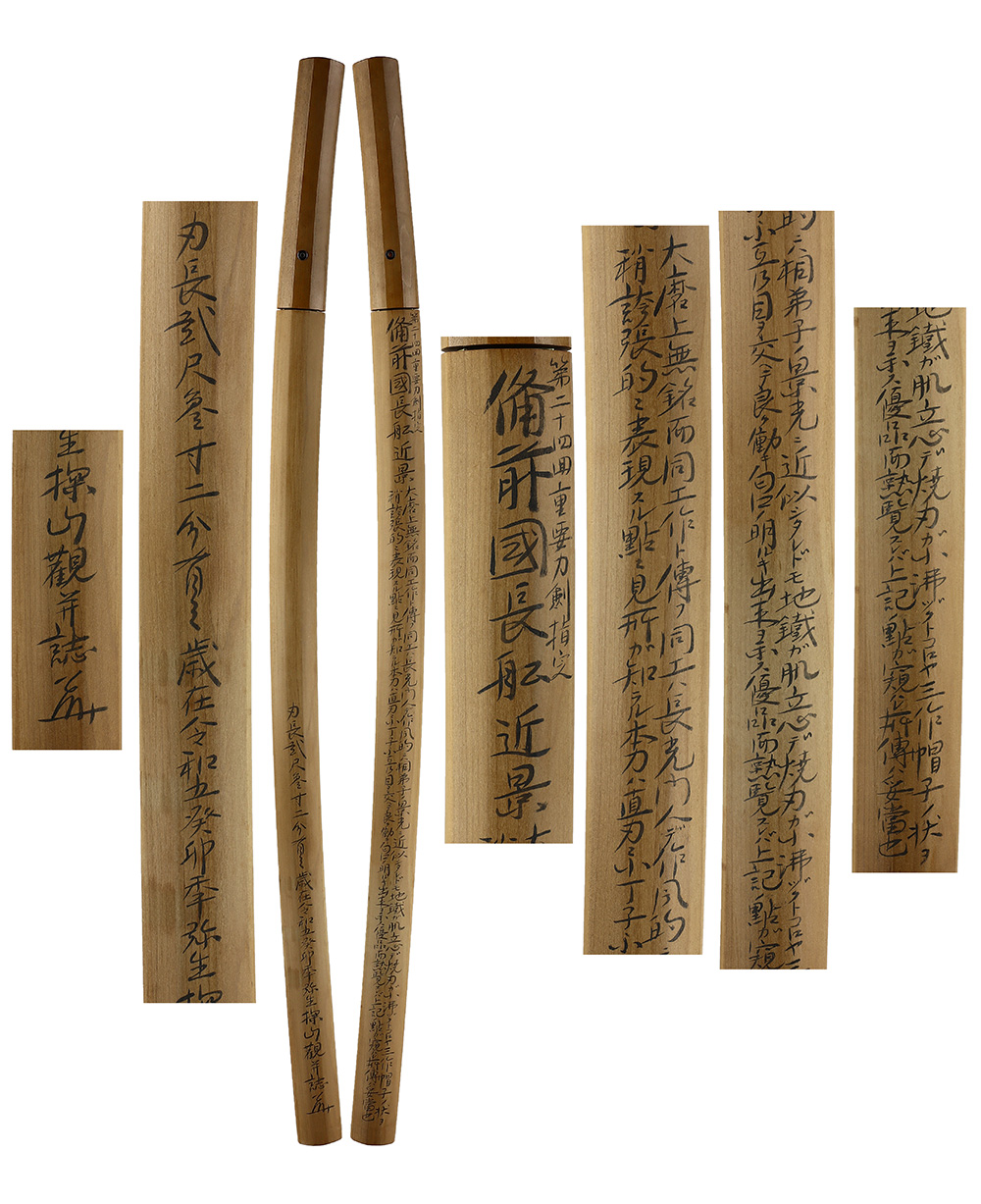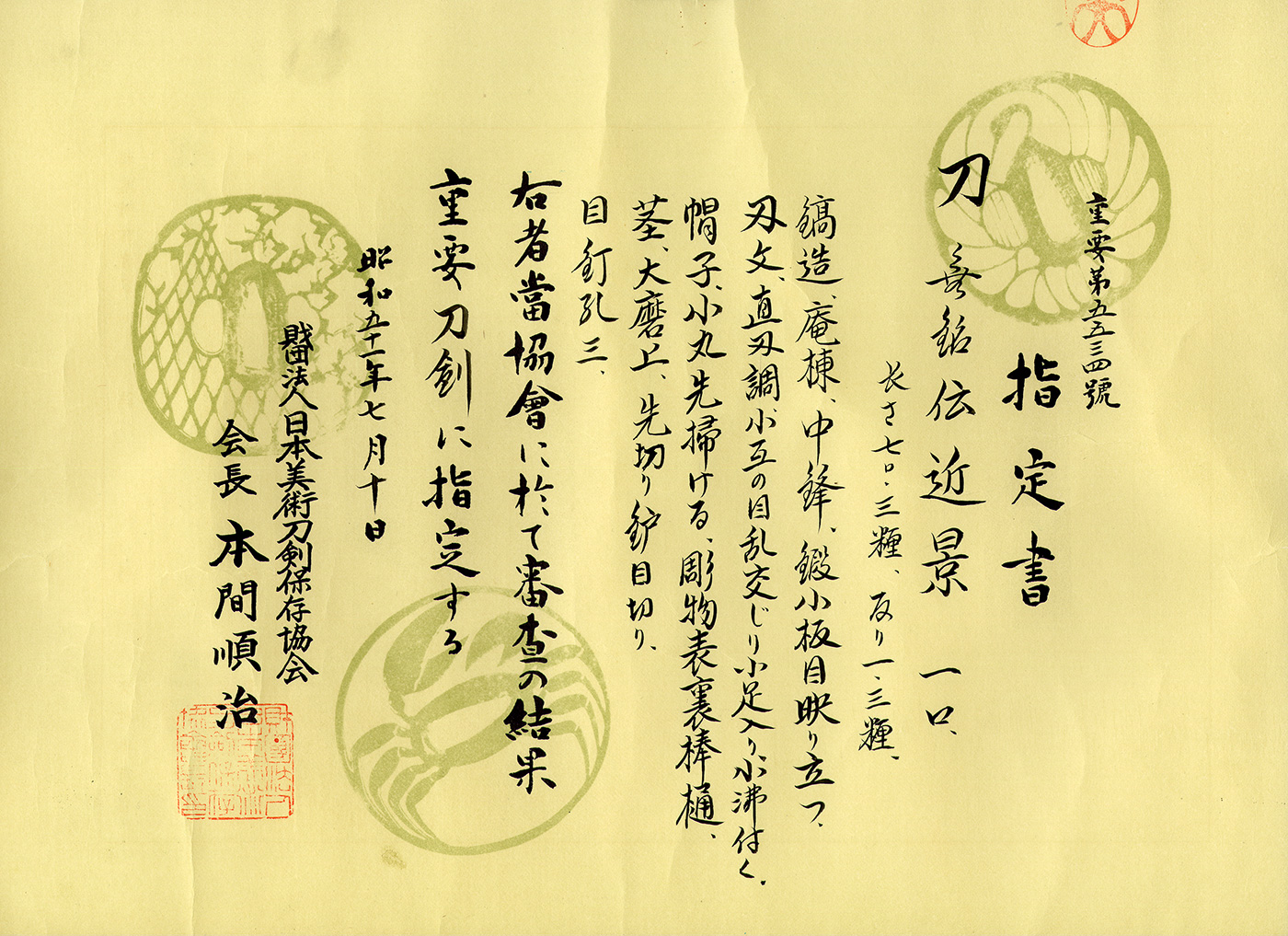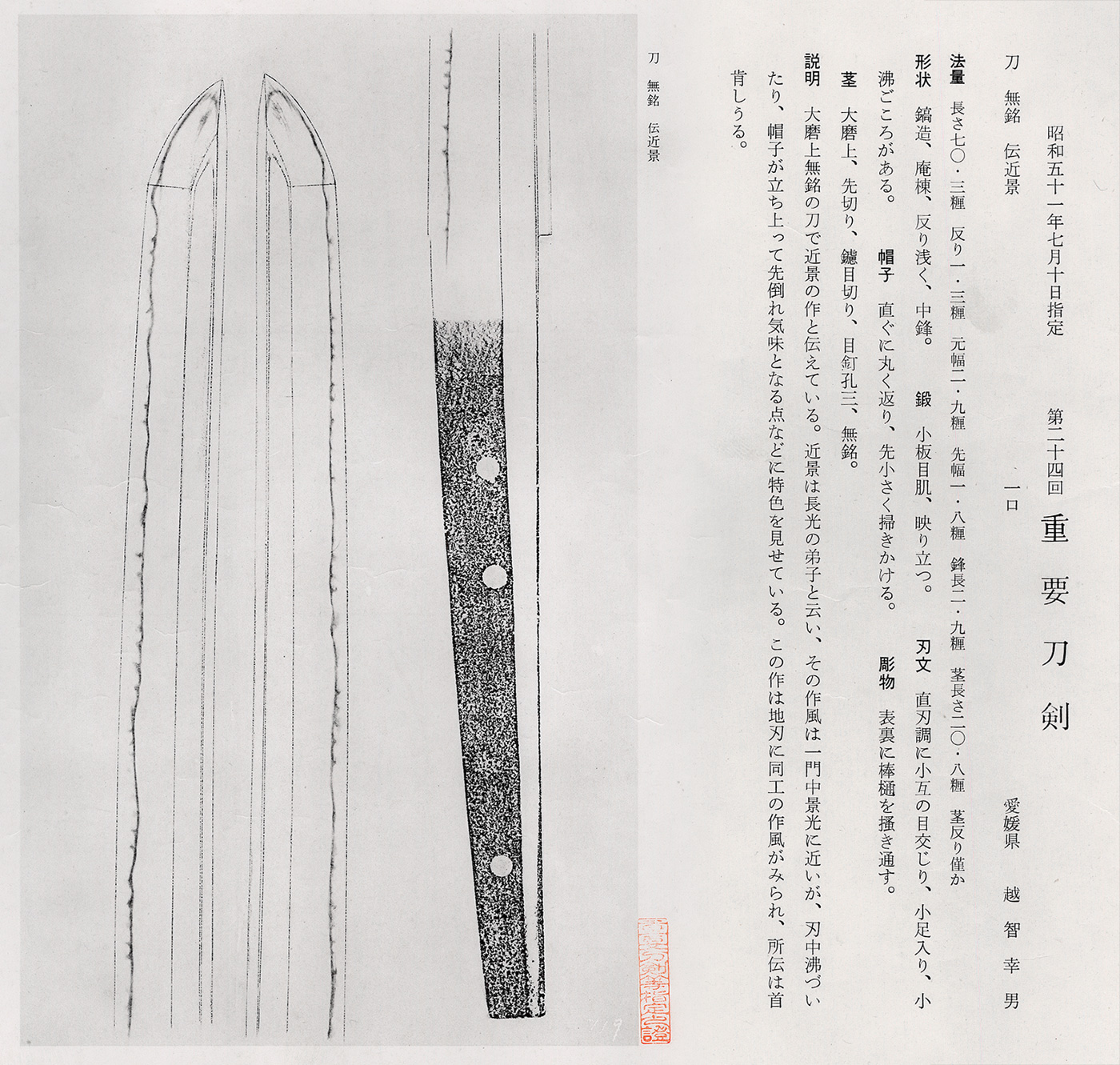Ordering number: 23003
Katana in Shirasaya with Koshirae(NBTHK the 24th Juyo Token)
Signature: Mumei(attributed to Chikakage)
無銘(伝近景)
Sayagaki(translation): Designated as NBTHK the 24th Juyo Token. Osuriage Mumei attributed to Bizen Kuni Osafune Chikakage. Chikakage is a disciple of Nagamitsu, closely resembles the style of his fellow disciple, Kagemitsu, although Jigane shows a distinct texture and the Hamon (temper line) exhibits small Nie(fine granules). The portrayal of Sansaku Boshi is slightly exaggerated, which adds to its charm. This sword has a Suguha with small Choji and small Gunome Hamon, displaying excellent performance and Nioikuchi is bright and lively. Upon careful examination, these aforementioned characteristics can be observed, confirming the validity of the judgement. The blade measures 2 shaku, 3 sun, 2 bu in length. Written in March of 2023 by Tanzan(Kao)
(We divide 4 sections for each sword as Saijyo saku, Jyojyo saku Jyo saku and regular saku)
This sword belongs to Saijyo saku ranking.
Habaki: Gold foiled double habaki.
The blade is polished by high ranking polisher.
Blade length : 70.3cm or 27.68 inches.
Sori : 1.2cm or 0.472 inches.
Mekugi : 3
Width at the hamachi :2.98 cm or 1.173 inches.
Width at the Kissaki : 1.91 cm or 0.752 inches.
Kasane : 0.63 cm or inches.
The weight of the sword 665grams
Era : End of the Kamakura period Genno 1319
Shape : The blde is O-suruage Mumei and engraved Front size and back size Bo-hi are engraved and rather deeo sori and also Kissaki is long.
Jigane: The Koitame skin is really well packed, and the reflection appears as a fine Jigane.
Hamon: The Hamon is suguha style Nioikuchi deeply bright and clear small ashi work Boshi is round shape and turns back.
Special feature: Chikakage is believed to be a disciple of Nagamitsu, and his active period is said to span from the late Kamakura period (Bun’ei era) to the Teiwa era. While he was a contemporary of Kazemitsu (Keimyō), he is considered a junior in terms of seniority, indicating a close relationship between the two. Although his style bears similarities to Nagamitsu’s, upon closer examination, it reveals distinctive characteristics not found in Nagamitsu’s works, such as stronger grain patterns (ji) and emphasized mitsu-saku-bōshi (three-stage hat). Additionally, there are pieces with pointed tips, showcasing the artist’s individuality.
Koshirae:
Tsuba: A round iron tsuba with a pattern of many warriors fighting in high-golden engraving.
Inscription: Made by Mokarako Munenori on the front, and Koshu Hikonezumi on the back
Fuchigashira: Syakudo nanako plate, In the boat, Samurai is battling his enemy. Inscribed
Mogarashi Sotensei
Scabbard: Scattered Aogai
Menuki: Warriors in armor are highly carved and painted with gold.
From Aoi Art:T he jigane exhibits a tightly packed itame-hada (wood grain pattern) with a prominent irregular reflection, while the hamon (temper line) features a mix of angular gunome in a straight tempering style, exhibiting well-defined small ashi and sakasa-ashi (reversed). Overall, it showcases remarkable features of the late Kamakura period, making it a highly desirable piece. Among the works of the same smith, this sword is particularly exceptional and well-preserved. Its style bears resemblance to Kagemitsu. The mounting consists of a scattered blue shell lacquer scabbard with high-quality fittings, including a tsuba, fuchi-kashira, and menuki that are a set with an inscription of Mogarashi Soten. We highly recommend considering this excellent piece for acquisition.
NBTHK the 24th Juyo Token
Aoi Art estimation paper: whole Oshigata by Ayaka Tsuruta







